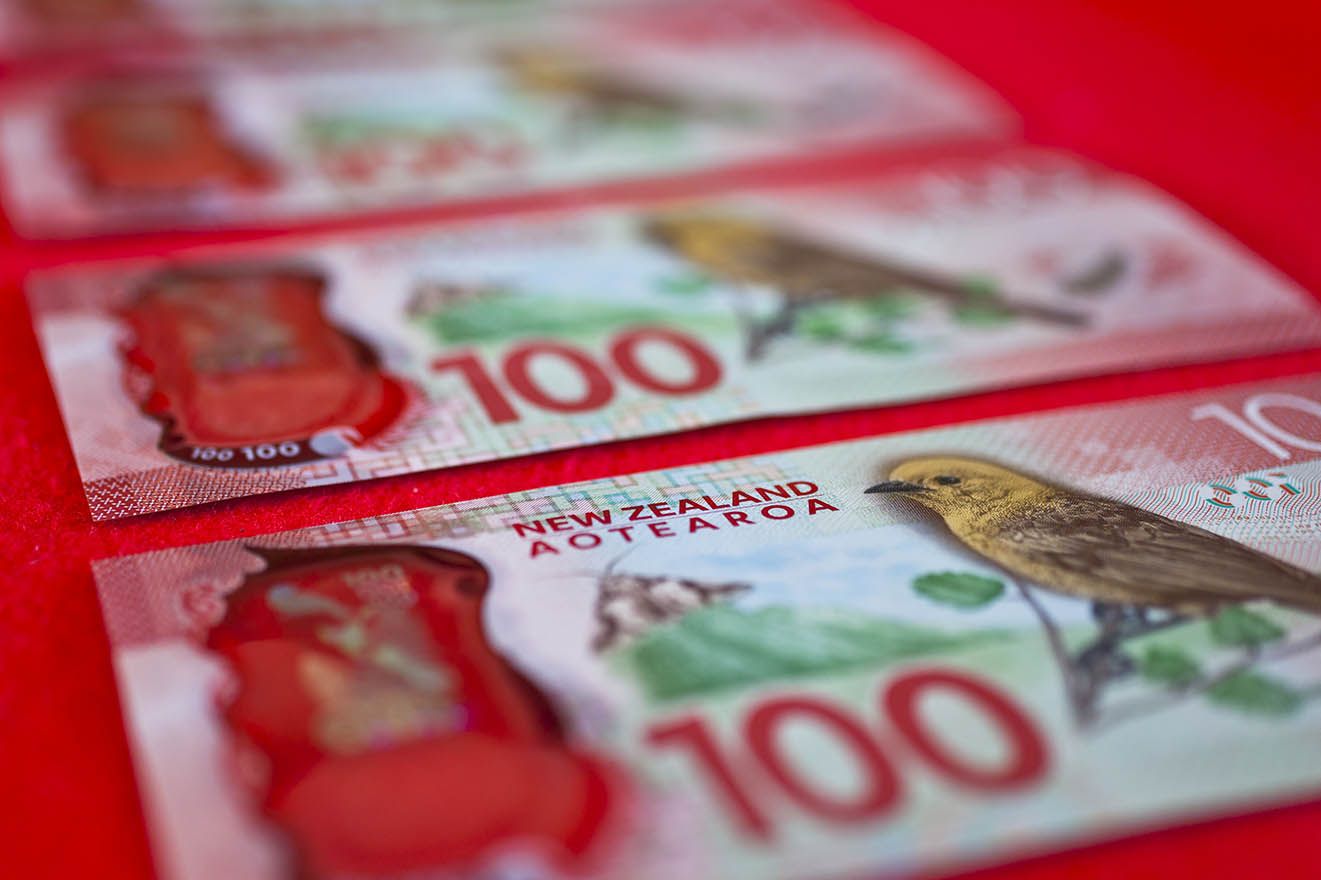New Zealand Dollar Risks Correction as RBNZ Looms and Charts Warn of Trouble
- Written by: James Skinner
-
-NZD shows resilience ahead of RBNZ’s policy decision.
-NZD gets free pass in Sept after negative rates priced-in.
-But softening stock markets and souring charts both risks.

Image © Adobe Stock
- GBP/NZD spot rate at time of writing: 1.9198
- Bank transfer rate (indicative guide): 1.8528-1.8662
- FX specialist providers (indicative guide): 1.8912-1.9027
- More information on FX specialist rates here
The New Zealand Dollar gave a resilient account of itself Tuesday having risen against all but the safe-haven major currencies, although September’s Reserve Bank of New Zealand (RBNZ) decision now looms over a Kiwi that's also at risk from weakness in stock markets and a souring backdrop on the charts.
New Zealand’s Dollar outperformed most rivals including the Pound Tuesday but was lower against a resurgent U.S. Dollar and cold be constrained in the mid-week session if the RBNZ attempts to talk it lower, although with a 2021 shift to negative interest rates now largely in the price of the Kiwi, some analysts doubt the bank will be able to make a mark on the currency.
“The choppy risk sentiment environment in September has prevented another rally in activity currencies and the NZD is now trading within the 0.66-0.68 range which – in our view – is still no cause for alarm at the RBNZ. NZD-focused comments will likely drive most of the NZD reaction, although we expect this to be relatively short lived, with NZD back to trading in line with global risk sentiment quite quickly.,” says Francesco Pesole, a strategist at ING.
RBNZ policymakers have already increased the size of their quantitative easing programme twice since its launch in March, lifting the bank’s maximum allowance for government bond buying from NZ$30bn to NZ$100bn, which is an amount that’s equivalent to around a third of New Zealand’s annual GDP.
Consensus expects no change to the parameters of that programme when the bank announces its latest decision at 03:00 London time on Wednesday, nor any change to the RBNZ’s cash rate of 0.25%, although the Kiwi might be sensitive to comments relating to the currency.
Above: NZD/USD shown at daily intervals with S&P 500 futures (orange line, left axis).
The bank has warned that a strong Kiwi Dollar will hamper the economic recovery and inflation outlook. It's threatened several times to cut the cash rate below zero or even carry out foreign asset purchases that would involve large sales of New Zealand Dollars in order to reign in the currency.
But the RBNZ has also said it’s unlikely to cut rates until after March 2021 and derivative market pricing suggests investors have already priced-in most of the interest rate cuts that might come from April next year onward. The overnight-index-swap market implies a cash rate of -0.09% for April 2021 and a cash rate of -20% by October 2021.
“Breaking that commitment would affect its credibility (we do expect that the RBNZ will deploy a negative OCR in April next year because the bond buying programme will run out of ammo before the battle is over). We see a high chance of a market-neutral outcome on Wednesday,” says Imre Speizer, head of NZ strategy at Westpac. “NZD/USD continues to oscillate inside an ascending range with current bounds at 0.6600 and 0.6850. Recent equity market weakness has rubbed off on the NZD and we’ll be watching for a potential break of 0.6600 during the next few days.”
Westpac is “cautiously bullish” in its multi-month outlook for NZD/USD in part because it expects the U.S. Dollar to unravel further heading toward year-end but the bank has warned that a short-term pullback in Kiwi exchange rates could be likely if international stock markets remain on their back foot.
Above: NZD/USD shown at weekly intervals with 200-week moving-average and Fibonacci retracements of 2018 downtrend.
"Above here on a closing basis would complete a medium term base and see momentum accelerate even further, with resistance next seen at .6800/06 – a psychological barrier and 78.6% retracement of the December/March fall," says David Sneddon, head of technical analysis at Credit Suisse.
Concerns about what a second coronavirus wave and resulting restrictions could do to the economic recovery in Europe helped sink stock markets on Monday, building on weakness that was inspired on Friday by White House efforts to bar two Chinese social media firms from the U.S.
The S&P 500, which NZD/USD tends to follow, has fallen more than -3% in the last week but could weigh heavier on the currency if investors remain cautious this week. However, even in the event that risk assets stabilise, the Kiwi may still find itself suffering a correction due to a deteriorating backdrop on the charts.
New Zealand’s Dollar was turned away from two key technical levels this last week, beginning with the 61.8% Fibonacci retracement of its 2018 downtrend located around 0.6764 and 200-week moving-average at 0.6780 and some analysts are now warning that further downside could be in store.
“The recent high has been coupled with a divergence of the daily RSI,” says Karen Jones, head of technical analysis for currencies, commodities and bonds at Commerzbank. “Both the daily and weekly RSI have diverged. Allow for a slide to the .6488 20th August low and then the 200-day moving-average at .6393 and the .6374 22nd June low.”
Above: Pound-to-New Zealand Dollar rate shown at daily intervals.







